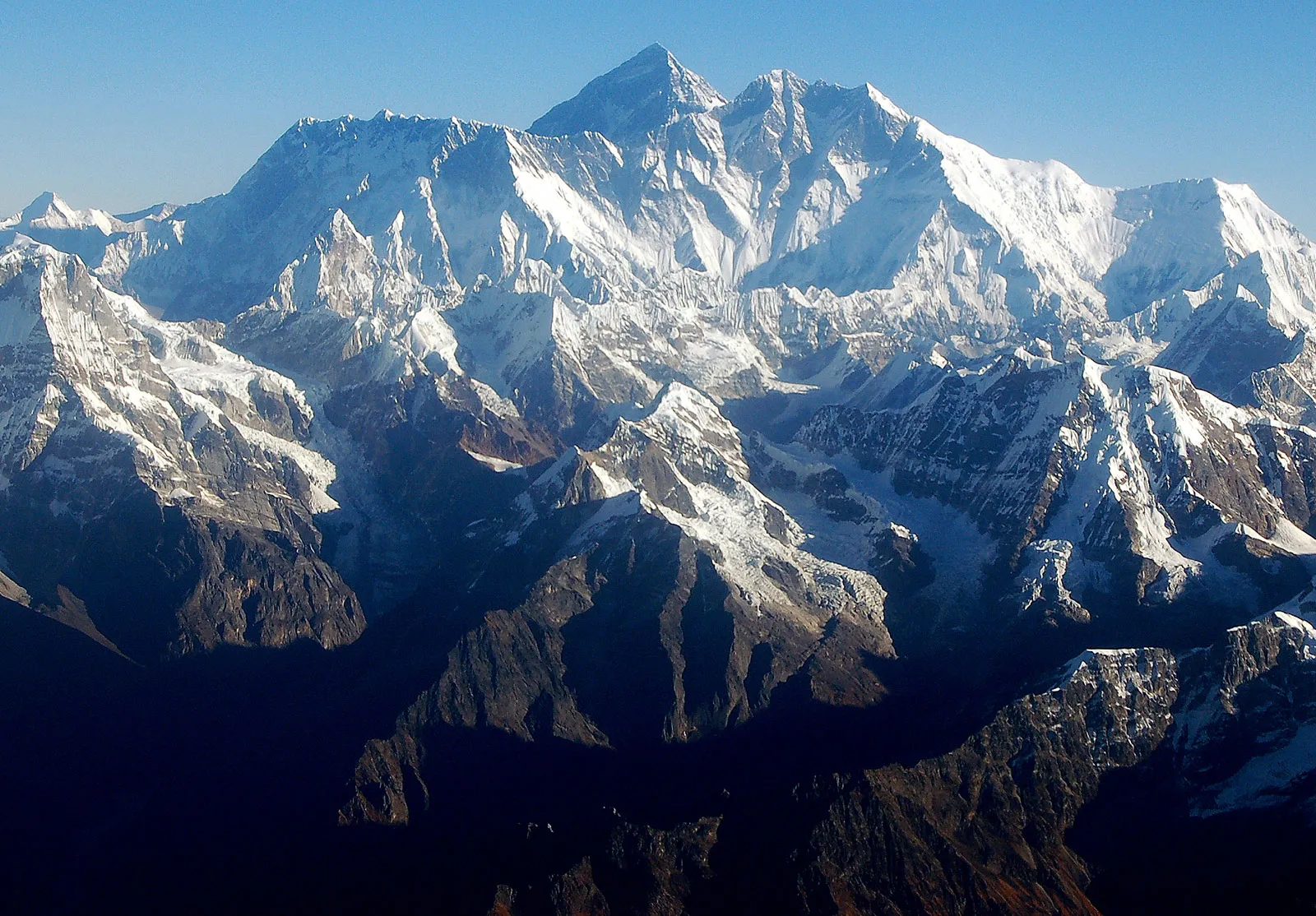In the simplest terms, Mount Everest is located in the Himalayas, straddling the border between Nepal and China’s Tibet Autonomous Region. Rising to an astonishing height of 8,848.86 meters (29,031.7 feet), it is the tallest mountain on Earth above sea level. But to merely state its location is to miss its true meaning. Everest is not just a mountain it is a symbol of endurance, spirituality, and the human desire to reach beyond limits. Its coordinates may fix it geographically, yet its significance extends far beyond maps, encompassing history, geology, culture, and the collective imagination of humanity.
This article explores Mount Everest in its full context where it is, how it came to be, and why it continues to fascinate climbers, scientists, and travelers from around the world. From its formation deep beneath the ocean millions of years ago to its present-day challenges of climate change and over-tourism, the story of Everest is both timeless and urgently relevant.
Quick Facts About Mount Everest
| Aspect | Details |
|---|---|
| Location | Border of Nepal and Tibet (China) |
| Mountain Range | Himalayas (Mahalangur Range) |
| Height | 8,848.86 meters (29,031.7 feet) |
| Coordinates | 27.9881° N latitude, 86.9250° E longitude |
| First Successful Ascent | May 29, 1953, by Sir Edmund Hillary and Tenzing Norgay |
| Local Names | Sagarmatha (Nepali), Chomolungma (Tibetan) |
| Country Access Points | Nepal (South Base Camp) and Tibet (North Base Camp) |
| Climbing Season | Primarily April–May and September–October |
| Formation Age | Approximately 60 million years old |
| Climate Zone | Alpine, extreme cold with low oxygen levels |
The Mountain That Defines the Sky
To ask where Mount Everest is located is to ask about a point on Earth that redefines the limits of human exploration. Everest stands on the border between Nepal’s Solukhumbu District and Tibet’s Tingri County, forming part of the Mahalangur sub-range of the greater Himalayas. Its precise location is marked by the global coordinates 27°59′17″ N, 86°55′31″ E. But beyond geography, Everest represents something far larger a threshold between earth and sky. At the heart of all this lies one simple truth: Everest is where humanity confronts nature’s extremes and, in doing so, discovers itself.
2. The Geological Birth of a Giant
Millions of years before humans named it, Mount Everest was born from a titanic collision beneath the sea. Around 60 million years ago, the Indian tectonic plate began to drift northward, colliding with the Eurasian plate. The immense pressure of this movement forced the Earth’s crust upward, forming the Himalayas Everest being their most magnificent peak. Even today, Everest continues to rise. Scientists estimate it grows approximately 4 millimeters per year, a slow but constant reminder that the Earth’s surface is alive. The mountain’s summit is composed of marine limestone, proof that it once lay beneath an ancient ocean. To stand atop Everest is, in a way, to stand on what was once the seafloor a paradox that captures the wonder of natural transformation.
3. The Dual Nations of Everest: Nepal and Tibet
Everest in Nepal: Sagarmatha, the Goddess of the Sky
On the southern side, in Nepal, Mount Everest is known as Sagarmatha, meaning “Forehead in the Sky.” The Nepalese side offers the most popular route for climbers, beginning from Lukla Airport, leading through Namche Bazaar, and finally reaching the South Base Camp at 5,364 meters. Sagarmatha is more than a mountain it is a spiritual entity. Locals believe that the goddess who resides there protects the land and watches over those who pass beneath her. Respect for nature is deeply ingrained in Nepali culture, and visitors are often reminded to act with humility before the mountain.
Everest in Tibet: Chomolungma, the Mother Goddess of the World
On the northern side, in Tibet, Everest is revered as Chomolungma, which translates to “Mother Goddess of the Universe.” The North Base Camp, accessible from Lhasa, sits at 5,150 meters. Unlike the greener valleys of Nepal, the Tibetan side presents a harsher, more desolate landscape one that mirrors the spiritual austerity of Tibetan Buddhism. Tibet’s approach to Everest is not merely geographical but deeply sacred. Pilgrims often circle the mountain or leave offerings, viewing it not as a challenge to conquer, but as a divine presence to be respected.
4. The Climb: Pathways to the Roof of the World
Reaching Everest’s summit is one of humanity’s greatest feats. There are two main climbing routes:
- The South Col Route (Nepal) – the most used and historically famous path.
- The North Ridge Route (Tibet) – longer, colder, and technically challenging.
The South Col Route, established by Hillary and Norgay in 1953, remains the standard. Climbers trek for nearly two weeks just to reach base camp, passing through Sherpa villages and ancient monasteries. From there, they ascend in stages:
- Base Camp (5,364 m) – acclimatization point.
- Khumbu Icefall – dangerous glacier with moving ice towers.
- Camp I to Camp IV – gradual climb through Western Cwm and the Lhotse Face.
- South Col to Summit – the final push above 8,000 meters, into the “Death Zone.”
This final stretch demands not only strength but oxygen, timing, and luck. The altitude is so severe that even small mistakes can become fatal. The view from the top, however, justifies the risk a panorama of Earth’s curvature, stretching across Nepal, Tibet, and into eternity.
5. The Sherpas: Keepers of the Mountain
No discussion of Everest’s location or meaning is complete without mentioning the Sherpas the indigenous people of the Himalayas who serve as guides, climbers, and cultural ambassadors. Living in villages around Namche Bazaar and Khumjung, Sherpas are known for their exceptional endurance and deep respect for the mountain. Their knowledge of the terrain is unparalleled. They navigate crevasses, fix ropes, and carry loads that would overwhelm even the strongest climbers. To them, Everest is not a trophy it is sacred ground, approached with ritual and reverence. The Sherpa people remind the world that Mount Everest is not merely a geographical wonder it is also a cultural landscape, woven with stories of courage, faith, and survival.
6. Climate and Ecology of Everest
At first glance, Everest appears lifeless. Yet, it supports a fragile ecosystem. On its lower slopes, juniper trees, rhododendrons, and mosses grow, providing habitat for rare species like:
- Snow leopards
- Himalayan tahrs
- Red pandas
- Pikas
Above 5,500 meters, vegetation vanishes, replaced by rock and ice. The upper zones experience temperatures as low as -60°C with oxygen levels less than one-third of sea level. Despite such extremes, life persists birds like bar-headed geese have been spotted flying over the summit, proving nature’s astounding adaptability.
7. Mount Everest’s Cultural and Religious Significance
For local people, Everest is not merely a mountain it is a divine being. In both Buddhism and indigenous Himalayan belief systems, it embodies sacred energy. Before climbing, Sherpas perform puja ceremonies, offering prayers and food to appease the spirits of the mountain. Monasteries like Tengboche sit in its shadow, where monks chant blessings for safe passage. These spiritual traditions add layers of meaning to Everest’s location—transforming it from a point on a map into a living, breathing symbol of the sacred.
8. The Human History of Exploration
Everest’s modern history began in the 19th century when British surveyors in India identified it as the world’s highest peak. Originally known as Peak XV, it was later named “Everest” after Sir George Everest, the British Surveyor General of India. The mountain resisted conquest for decades. In 1953, after numerous failed attempts, Sir Edmund Hillary (New Zealand) and Tenzing Norgay (Nepal) made history by reaching the summit. Their achievement changed global perceptions of human endurance forever. Since then, thousands have followed, transforming Everest into both a dream and a dilemma its allure leading to overcrowding and environmental strain.
9. Modern Challenges: Climate Change and Tourism
In recent decades, Everest has become a barometer for global change. Glacial melting threatens its very foundation, exposing rock and reducing ice stability. Scientists warn that rising temperatures could reshape the mountain’s appearance within decades. Tourism, too, presents a double-edged sword. While climbing expeditions boost Nepal’s economy, they also generate waste and overcrowding. In 2019, shocking photos of traffic jams near the summit revealed the cost of popularity. Efforts are now being made to regulate climbers, clean up waste, and preserve the mountain’s integrity.
10. The Legacy of Everest: Beyond Borders
Though Everest stands between Nepal and Tibet, it belongs to no nation alone. It is a global landmark a reminder of humanity’s shared planet and collective ambition. Its peaks unite rather than divide. Climbers from all nations, backgrounds, and beliefs have stood together on its icy crown, proving that the pursuit of greatness can transcend geography. The mountain has also inspired writers, philosophers, and filmmakers. From early expedition diaries to modern documentaries, Everest continues to serve as a metaphor for resilience, humility, and wonder.
Conclusion
So, where is Mount Everest located? It stands at the meeting point of two nations, two cultures, and countless dreams on the border of Nepal and Tibet, at the top of the world. Yet, its true location lies not just in maps or coordinates but in the human spirit that continues to seek it out. Everest is both a place and an idea a mirror of human aspiration and the eternal dialogue between nature and mankind. Whether you view it from a distance or dream of standing upon its summit, its message remains the same: there is still something sacred about striving higher.











